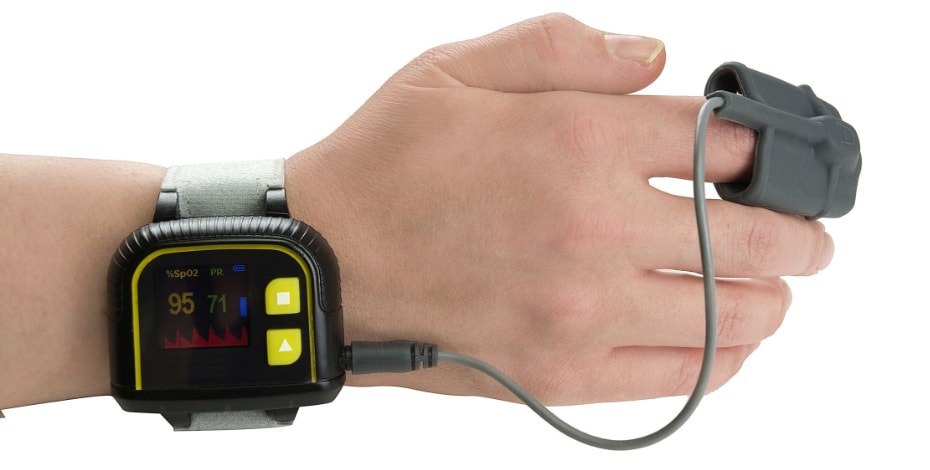
Remote oximetry monitoring in pulmonary rehab

Tristan Bonnevie discusses the research that investigates whether people doing pulmonary rehabilitation via telerehabilitation can learn to transmit valid oximetry data easily.
What proportion of people with chronic lung disease receive pulmonary rehabilitation?
Chronic lung disease (CLD) represents a major burden. Unfortunately, there is an important gap between it prevalence and the use of pulmonary rehabilitation (PR). Although PR is widely recommended, less than one per cent of patients with COPD access these programs. Factors influencing uptake of PR (but not restricted to) include a limited number of programs and urban location of the programs.
Is home-based telerehabilitation a suitable alternative to standard centre-based PR?
Yes. Home-based pulmonary telerehabilitation is as effective as standard centre-based PR in terms of patient-centered outcomes. The use of telehealth technology to monitor the patient allow to provide the peer support that centre- based PR provide.
It also offers further advantages. Firstly, it copes with the limited number of programs and offers access to rural patients, or to patients with a professional activity. Secondly, this approach is more flexible and facilitates adherence by allowing training to be performed whenever it suits the patients, adapting to the good and bad days. And thirdly, providing rehabilitation in the patient’s home environment makes it easier for the patient to change behaviours with respect to physical activity or exercise and would contribute to prolong its benefits.
What did your study investigate?
Research involving healthy participants revealed that the accuracy of remotely transmitted data could be compromised due to network and the telehealth system. Additionally, little was known about the ability for a patient referred to PR to use such a transmission system and whether they find it satisfactory. Therefore, this study investigated whether (1) patients referred for PR easily learn to use a system for remote transmission of oximetry data, (2) the transmitted data are valid compared with locally stored data, and (3) patients consider remote transmission to be satisfactory.
How many centres and patients were involved?
This observational study included two PR centres located in Normandy, France. Consecutive patients deemed eligible (with no restriction on the type of CLD) were invited to participate, for a total of 104 participants.
Did the patients manage to learn to record and transmit their oximetry data back to the hospital?
Any data transmission system will only be helpful for telemonitoring if patients can use it autonomously, so it was reassuring that the participants readily learnt to use the system with minimal training: 86 per cent (95% CI:78 to 92%) at the first testing session and, cumulatively, 97 per cent (95% CI:91 to 99%) after the second session. There was no written materials given, therefore these estimates are thought to be relatively conservative.
Did patients consider this task inconvenient or problematic?
When study participants were questioned about the system, 100 per cent found it easy to use and were satisfied with the system, and 98 per cent agreed to use it for their entire PR program. These favourable results have a good external validity.
Were the transmitted data valid compared with locally stored data?
More than 99 per cent of the data that was transmitted through the system was valid and correct. Most of the invalid readings were due to the odometer not reading correctly—that is, something that happens not uncommonly in regular clinical use of an oximeter without the transmission system. The validity of both the oxygenation and great rate were well within the accuracy limits that we pre-specified when we designed the study.
So you consider that the telemonitoring system used in this study was sufficiently valid and acceptable for use in at-home PR by people with chronic respiratory disease?
Based on the results of this study, it is reasonable to consider that the transmitted data are clinically equivalent to the acquired signal and could therefore be used for tele- rehabilitation. The system was user-friendly and almost every patient would agree to use it for their entire program; therefore, it can be considered that the telemonitoring system used in this study is sufficiently accurate and valid for use in home-based PR by patients with chronic respiratory disease.
Tristan Bonnevie, has nine years’ experience in respiratory physiotherapy. He is a PhD student at Rouen University, France.
© Copyright 2025 by Australian Physiotherapy Association. All rights reserved.





